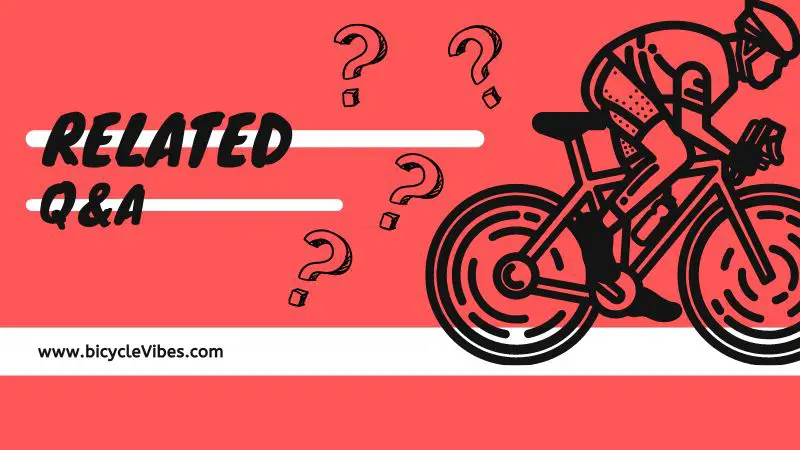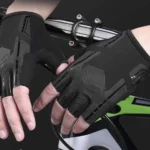
If you love biking on trails, it’s crucial to take some basic safety precautions. Here are some best practices for trail riding that will keep you safe and make your ride enjoyable.
First and foremost, always follow the rules of the trail. These rules may include staying on designated trails, avoiding headphones, obeying traffic signs and signals, and watching out for wildlife. Additionally, always obey traffic signs and signals when biking on roadways.
Make sure to wear a helmet at all times when biking. Furthermore, follow local laws when biking on sidewalks or in areas where bikes aren’t allowed. When biking at dawn or dusk, keep an eye out for wildlife.
Remember to always pass on the left and ride on the right. If you’re going downhill, be sure to yield to those going uphill on two-way trails.
Table of Contents
- Who has the right of way when on a trail?
- What are some guidelines for riding with others on multi-user trails?
- What factors should you consider when selecting a suitable trail for your group?
- Riding Responsibly On Multi-User Trails
- What are some ways to contribute to the preservation of the environment and prevent trail damage?
- To Sum Up
- Related Q&A
Who has the right of way when on a trail?

Cyclists need to be aware of their right of way when riding on bike trails. On a two-way bike trail, cyclists have the right of way. When on a one-way trail, pedestrians have the right of way over both cars and bicycles.
It’s essential for cyclists to yield to pedestrians when on a two-way trail. To ensure everyone’s safety, always ride on the right side and pass on the left.
When going uphill on a two-way trail, cyclists should yield to pedestrians to avoid accidents. On the other hand, when going downhill, they should yield to other cyclists for the same reason.
It’s important to keep in mind that pedestrians have the right of way on one-way trails, so cyclists should always be cautious and respectful. By following these guidelines, cyclists can ensure a safe and enjoyable ride for themselves and others.
What are some guidelines for riding with others on multi-user trails?
To ensure a safe and enjoyable experience on a multi-user trail, it’s crucial to remain attentive at all times. Riding with others is a great way to stay safe while enjoying the trail. Make sure to keep your eyes on the trail ahead and be prepared for any surprises.
Riding in a group on a multi-user trail has two benefits: it provides more time to enjoy nature, and it reduces the risk of accidents. However, always remember to wear protective gear such as helmets, gloves, long sleeves, and pants to prevent injuries.
If you’re just starting out, you don’t need to have all the latest biking gear. Having the basics such as helmets, gloves, and pads is essential. When packing your bike kit, consider the people you’re riding with and make sure everyone has the necessary gear to stay safe.
What factors should you consider when selecting a suitable trail for your group?
Choosing the right trail is crucial to ensure a safe and enjoyable trip for everyone in your group. However, it can be challenging to decide on the perfect trail, particularly if you have limited time for your trip.
In general, there are two types of trails to consider – single-track and multi-track. When selecting a multi-track trail, you have the option to choose either an out-and-back or an in-and-out trail.
Riding Responsibly On Multi-User Trails
To ensure proper usage of a multi-user trail, it’s essential to follow guidelines set by organizations such as the International Mountain Bicycling Association. Here are some guidelines to keep in mind when using a multi-user trail:
- Riding Responsibly on Multi-User Trails: Make sure you’re aware of and follow the trail rules and regulations. These rules may include specific requirements such as staying on designated trails or not riding with headphones.
- Be Aware: Always keep your eyes and ears open to your surroundings. Pay attention to the trail conditions and other users such as hikers and horseback riders.
- Be Courteous: When passing other trail users, slow down, announce yourself, and yield to them. Give other users plenty of space to avoid collisions.
- Watch Out for Others: Keep an eye out for other trail users, especially in blind spots or areas with limited visibility. Anticipate their actions and adjust your riding accordingly.
- Stay Safe: Always wear protective gear such as helmets, gloves, and pads. Make sure your bike is in good condition before hitting the trail. Bring water, snacks, and other essentials for the trip to ensure your safety and comfort.
What are some ways to contribute to the preservation of the environment and prevent trail damage?
A recent study suggests that improving the conditions of existing trails can help protect the environment significantly. To contribute to this cause, there are a few simple things we can do to keep our trails clean and green. Here are some tips:
- Dispose of Waste Properly: Don’t litter and make sure to properly dispose of any waste. Bring a trash bag with you and pack out any garbage you generate while on the trail.
- Limit Use of Motorized Equipment: Avoid using motorized equipment in non-designated areas. Use designated parking areas and don’t park on vegetation.
- Be Considerate of Others: Be mindful of other trail users such as hikers, horseback riders, and wildlife. Always yield to slower users and use appropriate signals to indicate your presence on the trail.
- Avoid Littering: Don’t throw garbage or debris on the trail. Bring a reusable water bottle and avoid using disposable containers.
- Pack Out Your Waste Properly: If there are no trash cans available on the trail, pack out your waste and dispose of it properly at a designated waste station or at home.
To Sum Up
Here are some tips for safe and enjoyable trail riding:
- Obey posted trail rules, watch for wildlife, wear a helmet, follow local laws, and yield to other users
- On two-way trails, pass on the left and yield to pedestrians; on one-way trails, pedestrians have the right of way
- Riding with others can be safer and more enjoyable
- Wear appropriate protective gear, such as helmets, gloves, and pads
- Choose the right trail for your group
- Follow guidelines for responsible trail use, such as disposing of waste properly, limiting use of motorized equipment, and being considerate of others.
Related Q&A

Q1: What are the basic rules of trail riding?
A1: The basic rules of trail riding include respecting the trail, staying on designated paths, yielding to hikers and horse riders, and maintaining proper trail etiquette.
Q2: How can you help preserve the trail while riding?
A2: You can help preserve the trail by avoiding skidding, maintaining appropriate speeds, not leaving any trash behind, and respecting the local wildlife.
Q3: What should you do when approaching a hiker on the trail?
A3: When approaching a hiker on the trail, you should yield the right of way, slow down, and give them enough space to pass comfortably.
Q4: What is the proper way to pass a slower rider on the trail?
A4: The proper way to pass a slower rider on the trail is to announce your presence, pass on the left, and wait for the rider’s signal before proceeding.
Q5: What should you do when encountering a horseback rider on the trail?
A5: When encountering a horseback rider on the trail, you should slow down, announce your presence, and ask for instructions on how to proceed.
Q6: What is the recommended speed limit for trail riding?
A6: The recommended speed limit for trail riding is 10 miles per hour or slower, depending on the trail’s difficulty level and the presence of other users.
Q7: How can you avoid causing erosion on the trail?
A7: You can avoid causing erosion on the trail by staying on designated paths, avoiding muddy areas, and not riding on wet or sensitive terrain.
Q8: What should you do if you encounter a damaged trail feature?
A8: If you encounter a damaged trail feature, you should report it to the appropriate authorities and avoid using it until it is repaired.
Q9: Can you ride on closed trails?
A9: No, you should not ride on closed trails, as they may be under repair or closed for safety reasons.
Q10: What is the most important rule of trail riding?
A10: The most important rule of trail riding is to respect the trail and its users, including hikers, horseback riders, and other cyclists.








